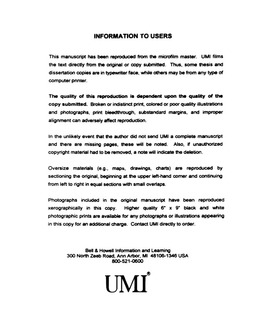| dc.contributor.advisor | Ederington, Louis H., | en_US |
| dc.contributor.author | Chaput, John Scott. | en_US |
| dc.date.accessioned | 2013-08-16T12:30:44Z | |
| dc.date.available | 2013-08-16T12:30:44Z | |
| dc.date.issued | 1999 | en_US |
| dc.identifier.uri | https://hdl.handle.net/11244/5869 | |
| dc.description.abstract | Turning to profit distributions, I find most are not normal. Specifically, puts and calls are leptokurtotic, while straddle distributions are mesokurtotic. I find bullish trades have significantly positive profits and bearish trades have significant losses. The variances of call and straddle profits are significantly larger than puts and strangles. | en_US |
| dc.description.abstract | I next look at the trading styles of the various clearing firms. I find three firms specialize in put trading, two in straddle trading, one in call trading, and two in strangle trading. Interestingly, none of the specialists were capable of consistently earning abnormal profits. | en_US |
| dc.description.abstract | I find that outright calls and puts account for less than half of the total trades in the sample. The most popular combinations (in descending order of importance) are: straddles, vertical (bull and bear) spreads, strangles, ratio spreads, delta neutrals, and collars. Market practitioners use options to trade volatility. | en_US |
| dc.description.abstract | In the final chapter, I develop a method of determining which pricing factor has the most influence on profits. For directional trades, the most important factor is changes in the underlying asset's price. Since these trades are designed to exploit the futures price, this result is not surprising. The more interesting case is volatility trades. For straddles and strangles, actual volatility (measured by gamma) is generally the most important influence on profits. Changes in implied volatility (measured by vega) are secondary, followed by changes in the underlying price. For delta neutrals, implied volatility is most important in the one-week holding period and actual volatility is second. In the longer holding periods, actual becomes more influential. | en_US |
| dc.description.abstract | In assessing the risk measures of trades, I find trades designed to exploit volatility have relatively deltas and large gammas, vegas, and thetas, on average and in MAV. Directional trades have relatively large gammas, vegas, and thetas compared to delta. | en_US |
| dc.description.abstract | This dissertation covers two general areas: actual trading practices in an actual option market and profits generated by these trades. The first part looks at actual trades executed and whether the firms that executed the trades specialize in a specific trade type. The second part addresses the distribution of option profits and creates a new decomposition of these profits. | en_US |
| dc.format.extent | vi, 104 leaves : | en_US |
| dc.subject | Business Administration, Banking. | en_US |
| dc.subject | Options (Finanace) | en_US |
| dc.subject | Economics, Finance. | en_US |
| dc.title | An analysis of trading in options on Eurodollar futures: Trade types, risks, and profits. | en_US |
| dc.type | Thesis | en_US |
| dc.thesis.degree | Ph.D. | en_US |
| dc.thesis.degreeDiscipline | Michael F. Price College of Business | en_US |
| dc.note | Chair: Louis H. Ederington. | en_US |
| dc.note | Source: Dissertation Abstracts International, Volume: 61-03, Section: A, page: 1097. | en_US |
| ou.identifier | (UMI)AAI9949695 | en_US |
| ou.group | Michael F. Price College of Business | |
